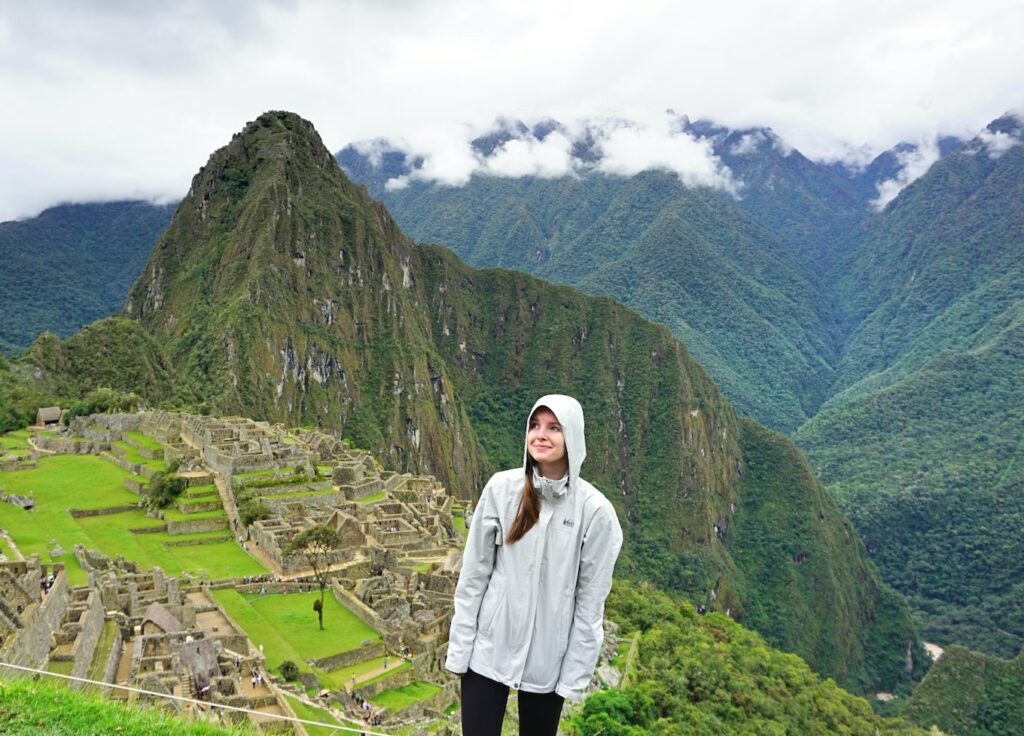
Machu Picchu experiences its highest rainfall in February, typically lasting for a continuous period of five days. However, this is followed by a consistent pattern of two sunny days known as “Veranillo.” Numerous tour companies opt to suspend trek offerings to Machu Picchu during this particular month.
February marks the month with the least sunshine in Machu Picchu and its surrounding region. Despite the closure of the Inca Trail for maintenance during this period, Machu Picchu still welcomes visitors. While it doesn’t mean the site will be sparsely populated, the crowds are relatively smaller compared to other months. During this time, many opt for train travel from Cusco through the Sacred Valley tour and Ollantaytambo.
The weather in February is warm and wet, indicating the presence of rain, although it doesn’t rain continuously. In these conditions, the weather can fluctuate, either improving with bright skies, lifting clouds, and the emergence of the sun, or taking a turn for the opposite. Ultimately, it can be a mix of both scenarios.
Things to know
- In february, the crowds are minimal.
- Temperatures are warm and the hills are green.
- February is the wettest month in Machu Picchu.Normally, there is a five-day stretch of continuous rainfall, succeeded by a two-day period featuring sunny weather known as Veranillo.
- Carnival festivities unfold nationwide, typically in late February. In Aguas Calientes, people engage in water balloon play. Beware! You might find yourself getting wet.
- The government closes the Inca Trail during this period for maintenance and repairs.
- Rain: On average, rain falls 22 days of the month.
- Temperature: It fluctuates between13°C and 25°C (55.4°F – 77°F).
Machu Picchu during the rainy season

Exploring Machu Picchu in the rainy season (December to March) offers a distinct experience compared to the dry season. The weather is cooler, and the landscape transforms into a vibrant, lush green. Optimal visiting time is during the early rainy season, spanning from late September to early December.
Here are some things to keep in mind:
- Weather: Anticipate regular rain showers and elevated humidity levels, which can add a layer of challenge to hiking and exploring Machu Picchu. However, the upside is that these conditions contribute to a lush and verdant surrounding landscape.
- Crowds: The rainy season typically sees fewer crowds compared to the dry season, offering the advantage of exploring the ruins and surrounding areas with fewer tourists.
- Safety: Rainfall can render trails and ruins slippery, presenting additional challenges for hiking. Wearing suitable footwear and clothing is crucial in these conditions.
- Photography: The rain has the potential to create stunning photography, as the mist and clouds infuse a mystical quality into the ruins.
- Flexibility:Be ready to adapt your plans according to the weather conditions. Certain areas may be susceptible to flooding or landslides.
The intense rainy season typically commences in mid to late December and concludes in late March. Rain is more likely during early mornings or late afternoons. Despite the rain, the sun persists, creating picturesque moments with Machu Picchu enveloped in the mist of the clouds. This season attracts fewer visitors, making it ideal for travelers seeking solitude. It’s also a opportune time to discover excellent deals on flights and hotels during the low season.
Machu Picchu In January
January stands out as the rainiest month of the year, averaging around 150 mm of rainfall. When visiting Machu Picchu during this month, it’s essential to have reliable rain gear. Travelers should be prepared for potential itinerary adjustments, trail closures due to landslides, train delays, and flight cancellations.
Machu Picchu in February
While February sees fewer rainy days compared to January, heavy rains are anticipated, averaging around 200 mm. During this period, the number of visitors to Machu Picchu reaches its lowest point.
Temperatures in Machu Picchu will fluctuate, reaching highs of around 72°F (22°C) and lows of around 46°F (8°C). Travelers should be ready for rain and potential schedule changes due to landslides or adverse weather conditions.

Machu Picchu in March
In March, the weather tends to improve, offering more sunny days and fewer hours of daily rain, averaging around 170 mm. The latter half of the month becomes the preferred time for travelers.
Temperatures in Machu Picchu will range from highs of approximately 71°F (21°C) to lows of around 42°F (6°C). Most trekking tours, including Inca Trail Tours, resume operations after February.
We advise against tours like the Salkantay Trek as they are situated in the Amazon area, where the rains remain substantial.
frequently asked questions about Machu Picchu in February
February stands out as the wettest month in the Cusco and Sacred Valley region, accompanied by warm temperatures with highs around 64°F (18°C) and lows around 43°F (6°C). This weather contributes to muddy conditions and an increased risk of landslides, and such conditions are not ideal for trekking.
The Inca Trail to Machu Picchu remains accessible throughout the year, except for February, the rainiest month. The closure during this period is due to the persistent rains, posing a risk of accidents along the route. Additionally, the Inca Trail may close in emergency situations, such as protests, roadblocks, natural disasters, or pandemics.
In February, Machu Picchu experiences an average temperature range for a typical day, reaching a high of 61°F (16°C) and dropping to a low of 46°F (8°C). Described by some as moderately chilly, the weather is humid yet cool. For context, the hottest month in Machu Picchu is September, featuring highs of 67°F (19°C) and lows of 46°F (8°C).
In adherence to Peruvian government regulations, the Inca Trail undergoes closure every February for maintenance and preventive measures. Nevertheless, all other travel options remain available daily, including packages to the Machu Picchu sanctuary.
A substantial portion of your Machu Picchu packing list should include layers. Even in winter, the daytime temperatures can be quite hot, given the intense sun at high altitudes. Sunscreen is crucial year-round!.

